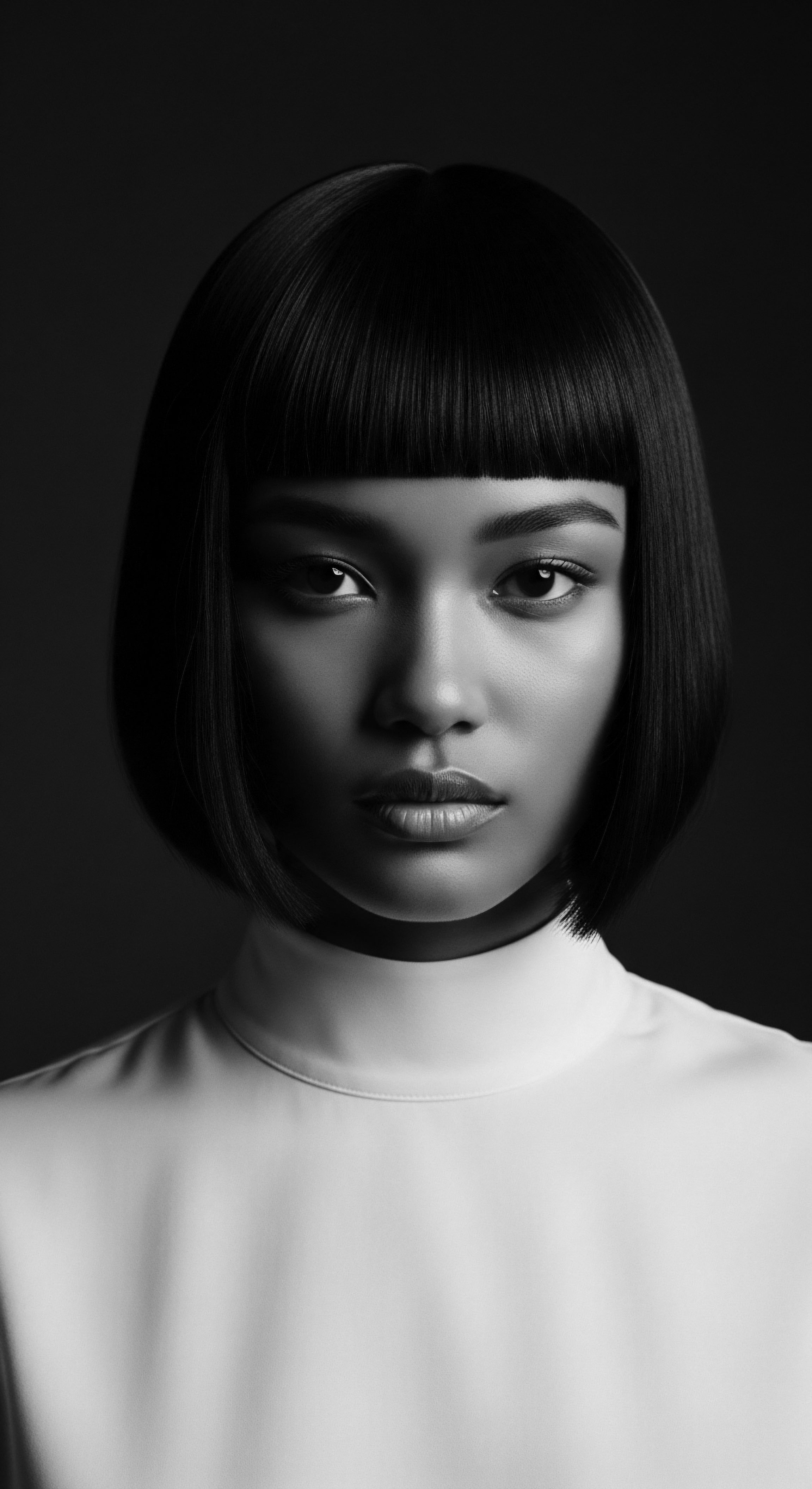
Roots
In the vibrant expanse of human experience, where ancestral echoes mingle with present-day rhythms, textured hair stands as a living testament to journeys undertaken, stories whispered across generations, and identities fiercely preserved. Its very existence, a marvel of natural design, has never been a mere aesthetic choice, but rather a profoundly coded language, a canvas for cultural survival and a proud declaration of self. For those of African and mixed-race descent, the rituals surrounding textured hair became a sanctuary, a means to hold onto heritage when other facets of existence were under relentless siege.
Consider, for a moment, the genesis of these strands. The unique helical structures, the variations in curl patterns, the inherent strength and often the delicate nature of textured coils and kinks – these are not random occurrences. They are the biological blueprints passed down through countless forebears, each one a whisper of ancient sun, ancestral lands, and resilient lineages. Modern science, through genetic mapping and microscopy, offers insight into the hair follicle’s elliptical cross-section and the distribution of disulphide bonds that define these distinct patterns.
Yet, long before the microscope revealed these facts, ancestral peoples understood the living quality of their hair, observing its behavior, its needs, and its capacity for expression. This understanding was not separate from daily life; it was interwoven with spiritual beliefs, social order, and communal well-being.

Hair Anatomy and Ancestral Perceptions
The biological architecture of textured hair, with its characteristic bends and twists, significantly influences its properties. Unlike straight hair, which typically emerges from a round follicle, coily hair often grows from a more elliptical or ribbon-shaped follicle, contributing to its distinct curl patterns. This structural variation, while offering volume and resilience, also presents challenges, making it more prone to dryness due to the difficulty of natural scalp oils traveling down the shaft, and potentially more vulnerable to mechanical stress.
However, this innate characteristic was not seen as a deficit in ancestral African societies. Instead, it was appreciated for its ability to hold intricate styles, to be sculpted into forms that communicated status, age, and tribal affiliation.
Early African societies, far from viewing their hair as something to be ‘managed’ or ‘controlled’ in the modern sense, recognized it as a living extension of their spirit and lineage. The crown of the head, housing the hair, was often considered the closest point to the divine, a conduit for spiritual interaction. Haircare, therefore, was not merely a physical task; it was a spiritual practice, a ritual of connection and reverence. The choice of specific styles often conveyed messages to the spirit world, invited blessings, or marked significant life transitions.

The Language of Classification and Legacy
Before any contemporary classification system for textured hair emerged, indigenous African communities possessed their own intricate systems for describing and categorizing hair. These traditional distinctions were not based on numerical scales but on societal roles, ceremonial significance, and communal identity. The way hair was styled could signify a person’s age, marital status, wealth, or tribal identity. For instance, certain patterns might designate a young woman ready for marriage, a mourning widow, a respected elder, or a warrior.
Textured hair, from its elemental biology to its intricate styling, serves as a profound historical record, reflecting millennia of human adaptation, cultural expression, and steadfast resistance.
The legacy of this historical categorization persists. Even as European beauty standards, often tied to straight hair, were imposed through colonialism and slavery, the deep-seated cultural memory of hair as a marker of self remained. The act of maintaining specific styles, even in secret, became a quiet defiance, a way to hold onto an identity that aggressors sought to erase. This historical context illuminates why discussions around textured hair continue to resonate with themes of heritage, belonging, and self-determination.
The very words used to describe textured hair today, while sometimes still burdened by past negativity (“kinky,” “nappy”), are being reclaimed and redefined by the communities whose heritage they represent. The essential lexicon of textured hair expands to include terms that honor its versatility and cultural meaning, reflecting a renewed appreciation for ancestral knowledge and inherent beauty. The vocabulary itself becomes an act of cultural preservation.
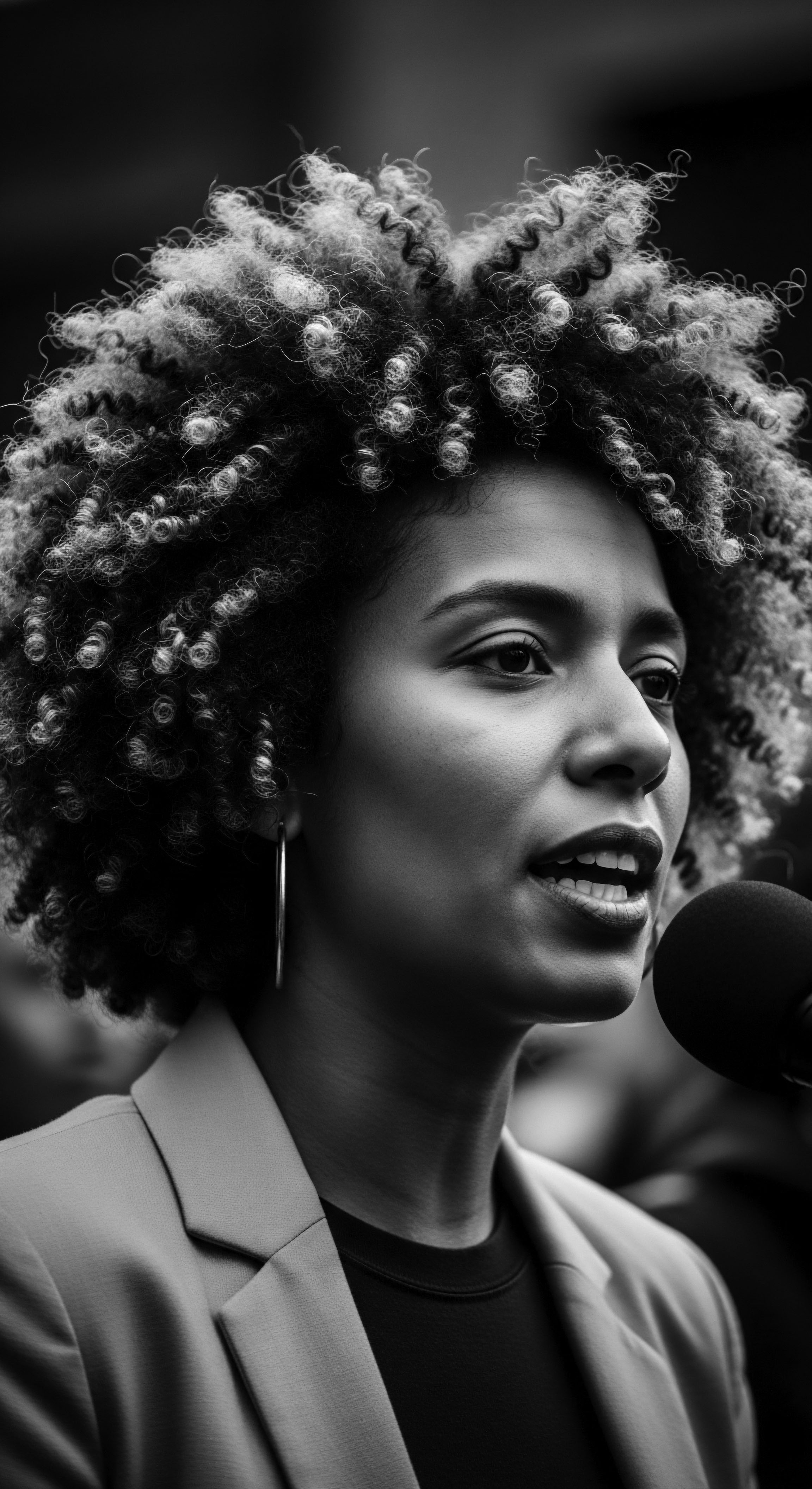
Hair Growth Cycles and Historical Influences
Hair growth follows distinct cycles ❉ anagen (growth), catagen (transition), and telogen (rest). While the fundamental biology of these cycles applies universally, historical circumstances and environmental factors significantly shaped how these cycles were observed and supported within various ancestral communities. Dietary practices, often rich in plant-based nutrients and natural oils, would have provided essential building blocks for healthy hair.
Consider the impact of living closer to the land, relying on local botanical knowledge for skin and hair care. Many indigenous communities across Africa utilized plants with known properties to maintain hair health, prevent breakage, and promote growth. Extracts from leaves, seeds, and barks, prepared through traditional methods, served as cleansers, conditioners, and treatments. These practices were passed down through generations, making hair care a repository of ethnobotanical wisdom, a direct link to the earth and its restorative power.
The cycles of hair growth, then, mirrored the cycles of nature, and care rituals aligned with a holistic understanding of well-being that included the body and its environment. These historical influences underscore how hair health was never isolated from the broader context of life, community, and the knowledge passed down from elders.

Ritual
From the foundational understanding of hair’s biological makeup and its symbolic roots, we move to the living practice ❉ the rituals of styling, adornment, and transformation. These actions, far from being superficial acts of vanity, formed a robust framework for cultural continuity, a vibrant expression of identity in the face of immense pressure. Textured hair, with its unique capacity to hold shape and volume, became a pliable medium for artistic expression, storytelling, and silent communication across diverse African societies and throughout the diaspora. Every braid, twist, or sculpted form carried layers of meaning, connecting individuals to their heritage, their community, and their past.

Protective Styling Traditions
The creation of protective styles – braids, twists, cornrows, bantu knots – traces back thousands of years in African cultures. These styles served multiple purposes ❉ practical, aesthetic, and deeply symbolic. They shielded hair from environmental damage, were a means of communal bonding during their creation, and acted as a visual language to convey information about the wearer. The continuity of these styles, enduring through time and across continents, speaks to their profound cultural worth.
For instance, archaeological evidence from the Sahara desert dates cornrows back to 3500 BCE, indicating their status as one of humanity’s earliest documented hairstyles. This longevity alone confirms their deep roots in heritage.
- Cornrows ❉ Ancient patterns often communicated tribal identity, age, social rank, or marital status. In the context of transatlantic slavery, cornrows gained an additional, covert purpose, becoming hidden maps or repositories for seeds.
- Braids ❉ Beyond their protective function, braiding sessions served as significant social gatherings, where stories were shared, wisdom imparted, and bonds solidified between generations.
- Bantu Knots ❉ Originating from the Zulu people of Southern Africa, these styles were powerful symbols of African identity and strength, particularly during colonial periods where they were often banned as acts of resistance.
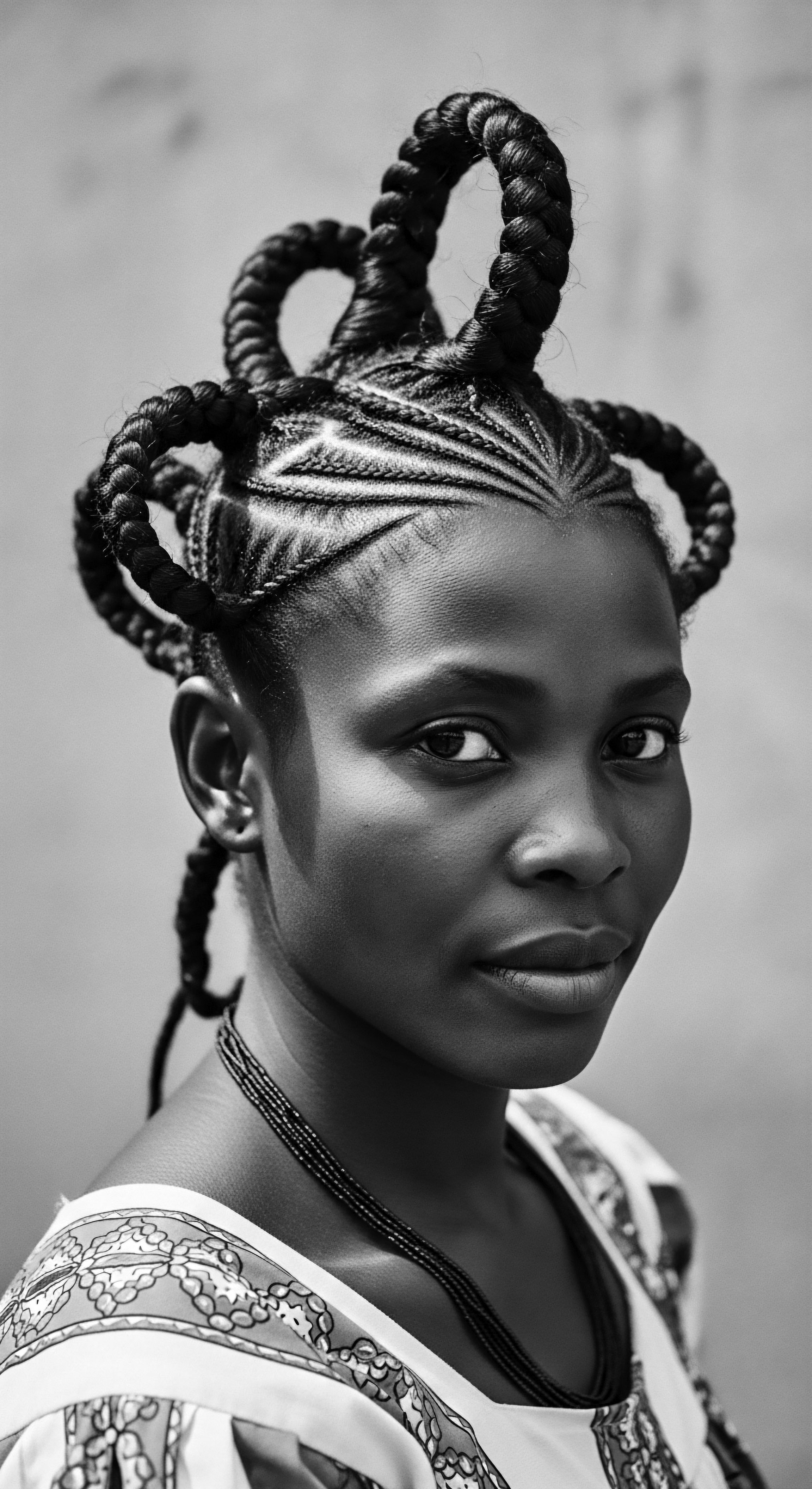
Can Traditional Styling Techniques Offer Modern Benefits?
Traditional techniques for natural styling and definition continue to provide effective methods for caring for textured hair today. Techniques like finger coiling, twisting, and braiding enhance natural curl patterns without the need for excessive heat or harsh chemicals. These methods, refined over centuries, align with the hair’s inherent structure, respecting its tendency to coil and clump.
For example, the meticulous practice of two-strand twists or flat twists creates definition, minimizes tangling, and helps maintain moisture. This knowledge, passed down orally and through observation, represents a practical heritage of hair care that prioritizes preservation and natural beauty.
The resilience of these traditional methods against the backdrop of imposed beauty standards is a testament to their deep cultural resonance. During periods when straight hair was promoted as the ideal, practices of wrapping, setting, and using natural oils to achieve a softer, more defined texture persisted in many communities, becoming a subtle form of resistance and self-affirmation. They represent a continuous thread of cultural knowledge that refused to be severed.

Historical Dimensions of Hair Extensions
The practice of adding hair for volume or length is not a modern invention; it has ancient roots within African hair heritage. Wigs and hair extensions held significant cultural weight in various historical African societies, often signifying status, wealth, or ceremonial readiness. In ancient Egypt, for instance, both men and women of the elite wore elaborate wigs made from human hair, wool, or plant fibers, often adorned with beads, jewels, or gold. These adornments were not merely decorative; they conveyed social hierarchy and even religious devotion.
During later periods and across different African communities, hair extensions created from natural fibers, animal hair, or even plant materials were integrated into natural hair to create complex and long-lasting styles. This demonstrated skill, artistry, and an understanding of hair manipulation that predates contemporary salon practices by centuries. The legacy of these practices continues to shape modern aesthetics, with extensions remaining a popular option for versatility and creative expression within textured hair communities, now often produced with different materials and techniques, yet echoing ancient traditions of hair augmentation for varied purposes.
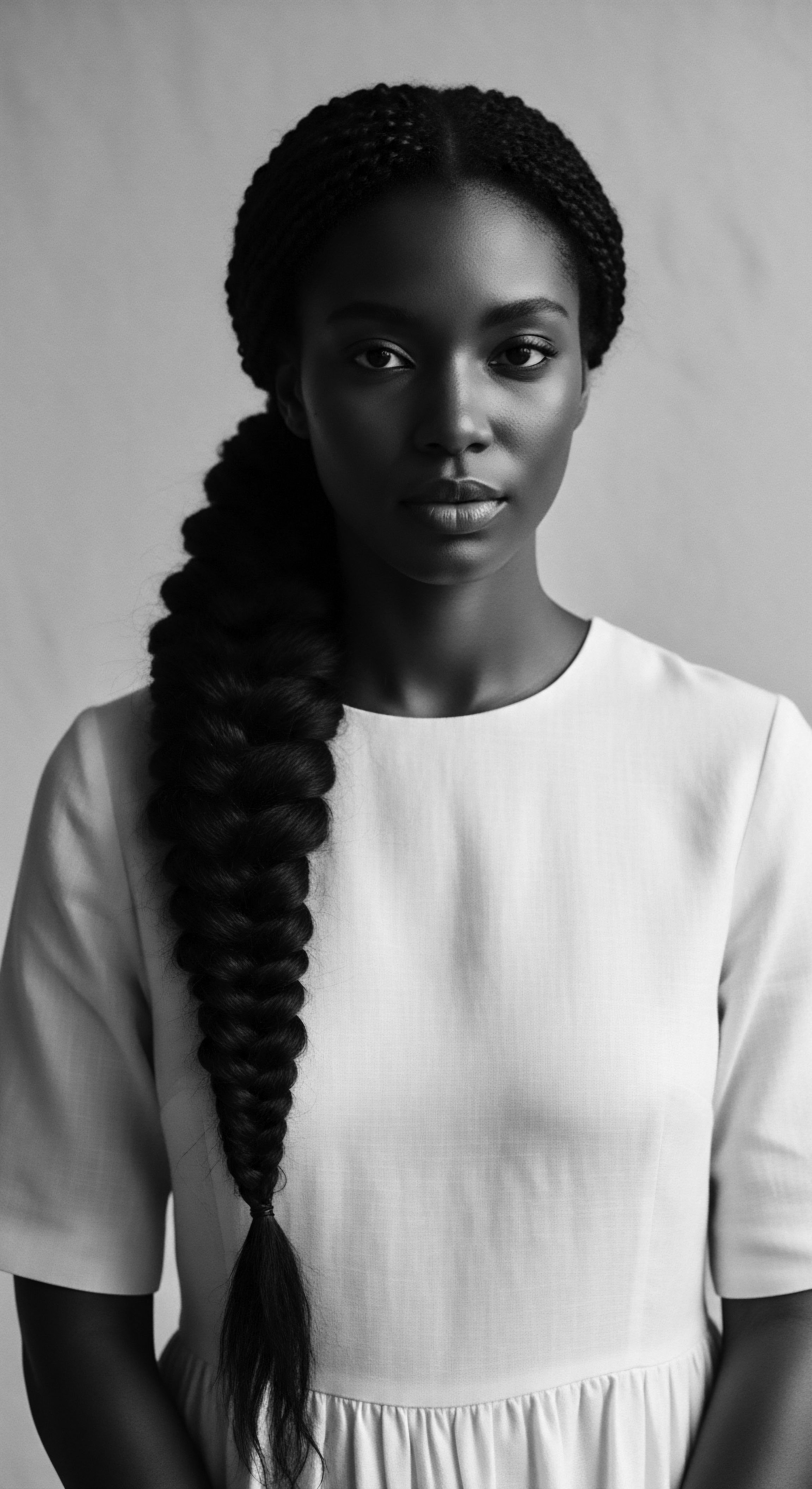
How Have Cultural Values Shaped Thermal Hair Practices?
The story of heat styling in the context of textured hair presents a complex historical arc, deeply informed by cultural values and societal pressures. While some ancient African cultures may have used heated tools for very specific, localized styling or straightening for ceremonial purposes, the widespread adoption of thermal reconditioning, particularly chemical relaxers and hot combs, gained prominence in the diaspora during periods when Eurocentric beauty standards dominated. The invention of the hot comb in the late 1800s, and later chemical relaxers in the early 20th century, provided means to alter the natural curl pattern, making textured hair conform to a straighter aesthetic.
From ancient signaling systems to modern expressions of pride, textured hair rituals are a dynamic conversation across generations, preserving cultural identity through every patterned braid and styled coil.
This historical shift highlights a period of assimilation where societal pressures linked professional and social acceptance to straightened hair. The cultural value placed on certain appearances, often driven by external gaze, led to the development and widespread use of these thermal and chemical methods. However, alongside this, there has always been a counter-movement, a return to affirming and celebrating natural texture. The Natural Hair Movement, which gathered momentum in the 1960s and again in the early 2000s, represents a conscious decision to reject imposed standards and reclaim the inherent beauty of textured hair, returning to methods that prioritize hair health over conformity.

The Tools of Heritage and Craft
The complete textured hair toolkit extends far beyond modern combs and brushes. It encompasses a vast array of tools, many with ancient origins, each serving a specific purpose in the care and creation of styles. Traditional tools, often crafted from natural materials like wood, bone, or horn, were central to ancestral haircare practices.
These included various types of combs, picks, and styling implements designed to work with the unique properties of textured hair. The meticulous process of detangling, sectioning, and styling relied on these tools, which were often passed down through families, embodying a lineage of knowledge and skill.
The practice of hair styling was, and in many communities remains, a social art. It involved not only the tools themselves but also the hands that wielded them and the communal space in which the styling occurred. The historical significance of these tools is clear ❉ they are tangible links to a past where hair was a profound aspect of communal life and self-expression.
The continuing use of traditional tools, or modern iterations inspired by them, represents a commitment to cultural practices and a recognition of the enduring wisdom embedded in heritage. These tools become instruments of cultural memory, helping to preserve and transmit practices across generations.
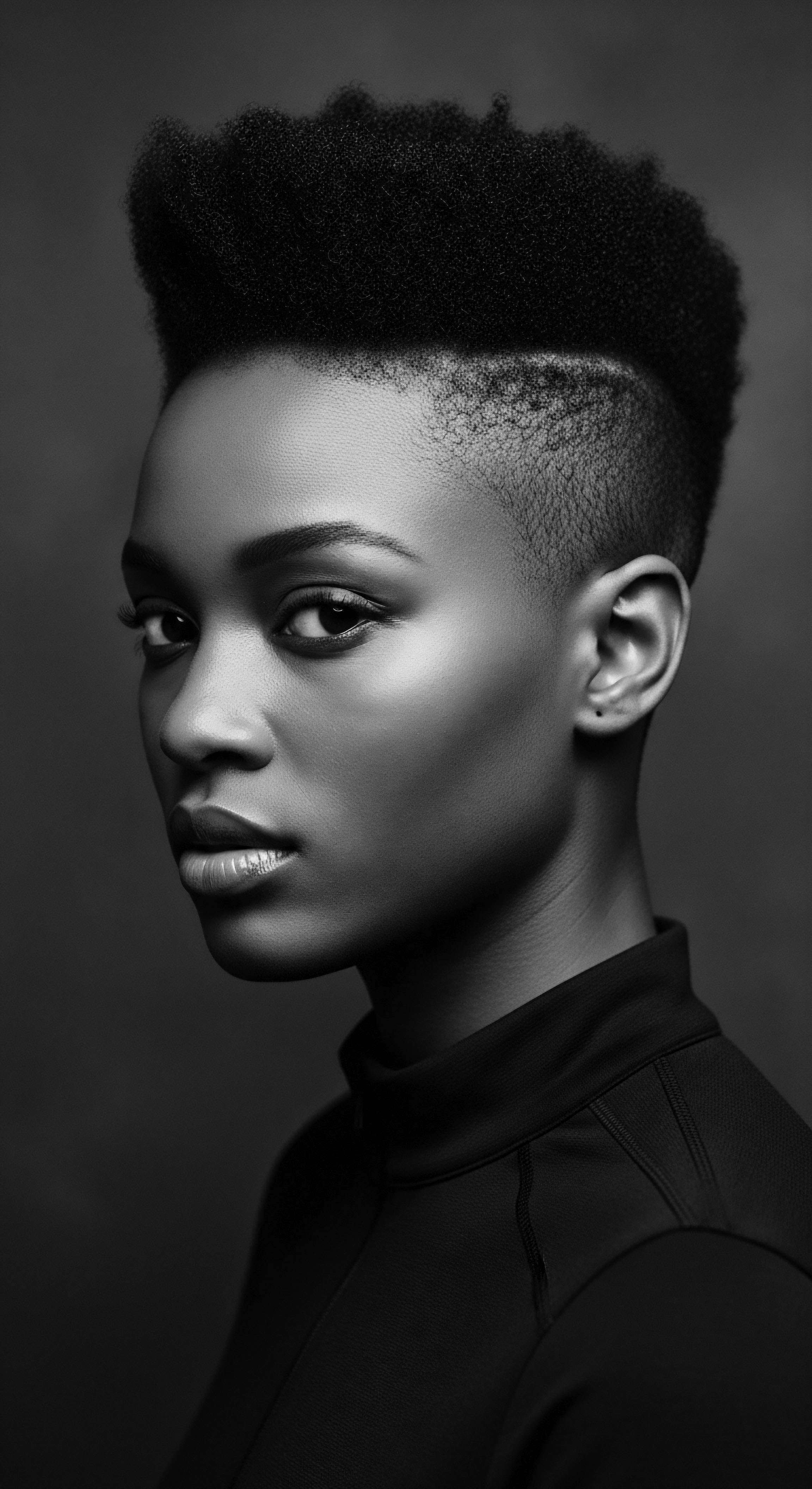
Relay
The journey of textured hair from its elemental biology and ancient roots to its styling expressions finds its continuity in the daily rhythms of care, communal connection, and problem-solving, all deeply rooted in ancestral wisdom and constantly adapting to modern understanding. This section moves beyond static structures and techniques to explore the dynamic, living aspects of textured hair practices as forms of cultural survival and identity assertion. It delves into the holistic philosophy that positions hair care as an extension of overall well-being, a practice that honors the past while building for the future. The choices made in daily hair routines, from the ingredients selected to the methods employed, often echo centuries-old customs, a direct link to the ingenuity of forebears who understood the specific needs of their hair long before scientific laboratories confirmed their observations.
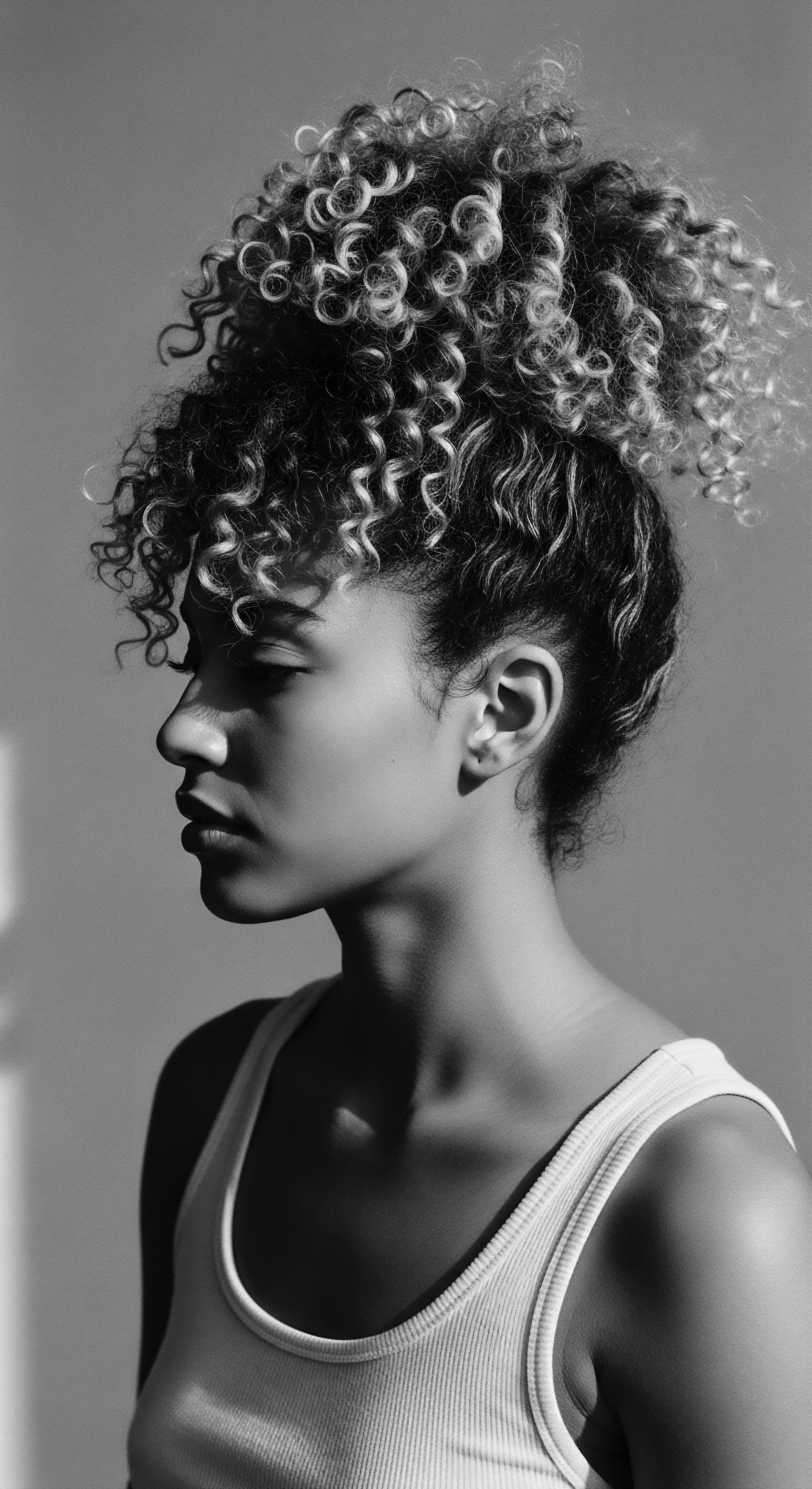
Building Regimens from Ancestral Wisdom
The concept of a “regimen” for textured hair, with its structured steps and dedicated products, might seem contemporary. Yet, the foundational principles of moisturizing, detangling, and protecting textured hair have deep ancestral roots. Indigenous African communities practiced systematic care routines, often relying on locally sourced natural ingredients.
These practices were guided by an intuitive understanding of hair’s needs, developed through generations of observation and experimentation. For example, natural butters and oils were widely used to retain moisture, a critical need for textured hair, which tends to be drier due to its structural properties.
The careful selection and application of botanicals formed the bedrock of these regimens. Communities utilized plant extracts for cleansing, conditioning, and treating scalp conditions. This ethnobotanical heritage, where plants were known for their specific benefits to hair health, provides a blueprint for modern holistic hair care.
For instance, the use of shea butter (Vitellaria paradoxa) or palm oil (Elaeis guineensis) across various African communities for their emollient and protective qualities is a testament to this enduring wisdom. Building a personalized textured hair regimen today often means looking back at these ancestral practices, adapting them with modern knowledge, and creating a routine that respects the hair’s natural inclinations while drawing from a rich historical well of care.
| Aspect of Care Moisture Retention |
| Ancestral Practice Use of natural butters (e.g. shea, cocoa) and oils (e.g. palm, coconut) for sealing. |
| Contemporary Application Layering leave-in conditioners, creams, and oils; incorporating deep conditioning treatments. |
| Aspect of Care Cleansing Agents |
| Ancestral Practice Plant-based soaps (e.g. African black soap), herbal infusions, clay washes. |
| Contemporary Application Sulfate-free shampoos, co-washing, clarifying shampoos for buildup. |
| Aspect of Care Detangling Methods |
| Ancestral Practice Finger detangling, wide-tooth combs crafted from wood or bone, oiling before detangling. |
| Contemporary Application Wide-tooth combs, detangling brushes, conditioners with slip, sectioning hair before detangling. |
| Aspect of Care Hair Protection |
| Ancestral Practice Braids, twists, headwraps; natural fiber mats for sleeping. |
| Contemporary Application Protective styles, satin/silk bonnets and pillowcases, low-manipulation styling. |
| Aspect of Care The evolution of textured hair care reflects a continuous dialogue between inherited wisdom and scientific discovery. |

What is the Cultural Significance of Sleep Protection for Textured Hair?
The nighttime sanctuary for textured hair, particularly the use of bonnets and headwraps, carries a deep cultural resonance that transcends simple hair protection. Historically, head coverings in African cultures held immense social, spiritual, and aesthetic meaning. They communicated status, marital standing, and religious adherence.
When enslaved Africans were brought to the Americas, head coverings, including simple rags, were often imposed as a means of dehumanization, to conceal hair that slave owners considered “unruly” or “unprofessional.” However, these very coverings were reclaimed and transformed into symbols of resilience and covert beauty. Underneath these headwraps, women would still care for their hair, protecting it from breakage and tangling while they slept or labored.
The wisdom of protecting hair during sleep, rooted in centuries of observation of its needs, became a private act of self-care and preservation of identity. The bonnet, in its modern iteration, serves as a direct descendant of these historical practices. It minimizes friction against harsh fabrics, helps to retain moisture, and maintains style definition, extending the life of protective styles.
This simple piece of fabric, therefore, is not merely a practical accessory; it is a cultural artifact, connecting contemporary wearers to a lineage of resistance, care, and silent defiance. It represents the enduring commitment to textured hair health and the preservation of a sacred, private self.

Ingredient Deep Dives from an Ancestral Lens
The choice of ingredients in textured hair care is a direct link to ancestral landscapes and traditional botanical knowledge. Before commercial products, communities relied on the gifts of their environment. Studying these traditional ingredients reveals a sophisticated understanding of their properties and how they interacted with hair. Many ingredients, like shea butter, coconut oil, and various herbal extracts, have been used for centuries across different African regions for their moisturizing, strengthening, and soothing qualities.
- Shea Butter (Vitellaria Paradoxa) ❉ A cornerstone of West African hair and skin care, revered for its emollient properties, aiding moisture retention and scalp health. Its traditional preparation involved community effort, highlighting its social as well as cosmetic importance.
- Coconut Oil (Cocos Nucifera) ❉ Utilized in various parts of the African continent and diaspora, recognized for its ability to penetrate the hair shaft, reducing protein loss and providing deep conditioning. Its widespread use speaks to its accessibility and effectiveness.
- African Black Soap ❉ A traditional cleanser, often made from plantain skins, cocoa pods, and shea tree bark, known for its gentle yet effective cleansing properties without stripping natural oils. It represents a heritage of natural purification.
Modern science now validates many of these traditional uses, explaining the molecular mechanisms behind their efficacy. This intersection of ancestral wisdom and contemporary understanding strengthens the case for holistic hair care, reminding us that the answers often lie in returning to the source, to the ingredients that have sustained healthy hair through generations. The deep dive into these ingredients is a deep dive into heritage, a recognition that the earth itself provided the solutions for textured hair health long ago.
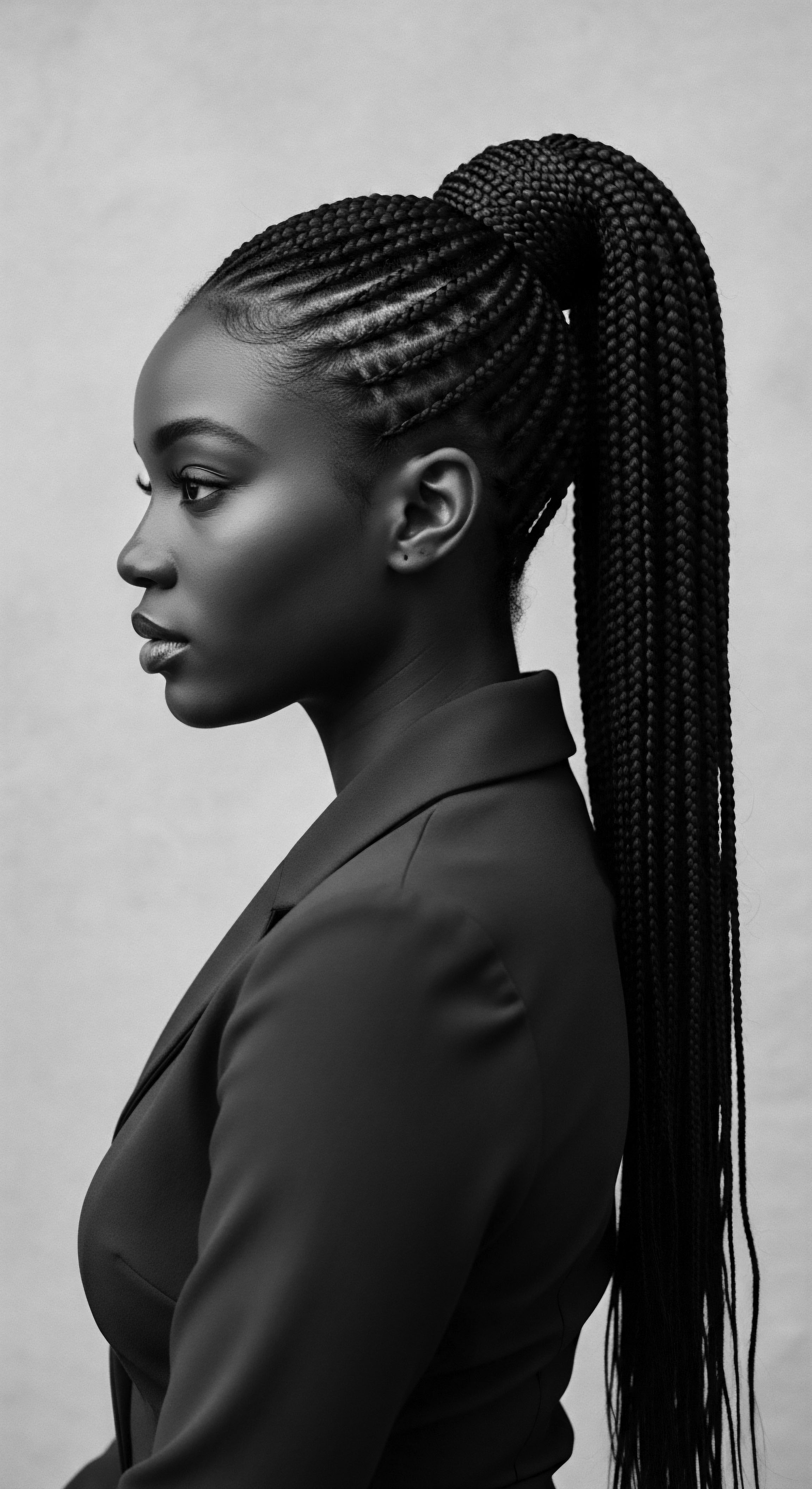
What Historical Examples Reveal about Textured Hair Problem-Solving?
Addressing common textured hair concerns – dryness, breakage, tangling – is a challenge met with both inherited wisdom and evolving solutions. Historically, communities devised ingenious methods to cope with these issues, methods that doubled as acts of cultural preservation. The meticulous application of oils, the strategic use of protective styles, and communal grooming sessions all served as practical solutions to hair challenges while reinforcing social bonds and cultural norms.
A poignant historical example illustrates how hair rituals directly contributed to cultural survival and identity in the face of profound adversity. During the transatlantic slave trade, enslaved African women, particularly those from rice-growing regions of West Africa, braided rice seeds into their hair before being forcibly transported to the Americas. This quiet act of defiance was not merely about carrying sustenance; it was about preserving a piece of their agricultural heritage, their ancestral diet, and ensuring the survival of their people and culture in a new, hostile land.
These rice varieties, like the ‘alisi Sééi’ rice cultivated by the Saramaccan Maroons in Suriname, still bear the names of the enslaved women who brought them, a testament to their foresight and the power of hair as a vessel for survival. This single act of ingenuity, performed through the ritual of hair braiding, speaks volumes about how problem-solving extended far beyond aesthetics, becoming a matter of literal life and death, of preserving a way of life.
This historical insight informs contemporary problem-solving. It underscores that hair health, and the ability to manage its challenges, has always been tied to a broader context of resilience and self-sufficiency. Modern textured hair care continues this legacy by emphasizing moisture, gentle handling, and protective measures, often drawing from or validating these ancestral practices. The ability to solve hair problems was, and remains, an act of autonomy, a declaration of identity against forces that seek to diminish it.

Holistic Influences on Hair Health Through an Ancestral Lens
The concept of holistic wellness, where physical health is intertwined with mental, emotional, and spiritual well-being, is not a modern trend. It is a philosophy deeply embedded in ancestral African societies, and hair health was seen as a mirror of this overall state. Hair was viewed as a conduit for spiritual energy, and its condition reflected a person’s connection to the divine, their ancestors, and their community.
Stress, diet, and spiritual harmony were all understood to impact the hair. Therefore, ancestral wellness philosophies naturally included practices that supported hair health as part of a larger continuum of care. Communal grooming, beyond its practical benefits, served as a therapeutic activity, reducing isolation and strengthening social bonds. The sharing of stories, songs, and wisdom during these sessions contributed to mental and emotional well-being, which in turn contributed to the holistic health of the individual.
This ancestral approach reminds us that true hair health extends beyond topical products; it encompasses the inner state, the connection to heritage, and the support of community. It is a legacy that teaches us to care for our strands as we care for our whole selves, honoring the wisdom passed down through time.

Reflection
As we conclude this exploration of textured hair rituals, the enduring echoes of ancestral wisdom resound. The journey has revealed a profound truth ❉ textured hair has never been a passive aspect of appearance. It has been a dynamic, living archive, a sacred trust passed from elder to child, bearing the imprints of joy, struggle, innovation, and an unwavering commitment to selfhood. In every coiled strand, every patterned braid, and every meticulously tended loc, we witness a heritage of defiance and beauty that defied erasure, a language spoken without words.
It is a legacy that continues to affirm identities, heal historical wounds, and point towards a future where textured hair is universally celebrated for its inherent majesty and deep cultural roots. The “Soul of a Strand” is indeed the soul of a people, resilient and radiant, forever connected to its source.

References
- Bebrų Kosmetika. (2024, August 23). The Power of Hair in African Folklore ❉ Rituals and Traditions.
- Afriklens. (2024, November 1). African Hairstyles ❉ Cultural Significance and Legacy.
- The History and Cultural Significance of African Hair Braiding. (2023, December 21).
- BLAM UK CIC. (2022, September 15). The history of Black Hair.
- How Enslaved Africans Braided Rice Seeds Into Their Hair & Changed the World. (2020, April 5).
- Umthi. (2023, September 14). The Cultural Significance and Representation of Afro-Textured Hair.
- Odele Beauty. (2024, January 16). A History Lesson On Hair Braiding.
- African American Registry. Black Hair Care and Its Culture, a story.
- Ebus, B. (2024, January 30). How Rice Hidden by a Woman Fleeing Slavery in the 1700s Could Help Her Descendants. The Guardian.
- Refinery29. (2021, February 23). The Evolution Of The Natural Hair Movement.
- Genesis Career College. History of Braids ❉ More Than Just a Hairstyle.
- Never the Less Inc. History of Black Hair Care.
- Why 5,500-year-old African braids became the secret code that saved countless lives. (2025, June 9).
- Umthi Beauty. (2022, March 8). The Spiritual Significance of African Hair this International Women’s Day and Beyond.
- Carney, J. A. (2001). ‘With Grains in Her Hair’ ❉ Rice in Colonial Brazil. UCLA Geography.
- Purnam, V. et al. (2025, March 4). Historical Perspectives on Hair Care and Common Styling Practices in Black Women.
- Mensah, C. (2020). Good Hair ❉ The Essential Guide to Afro, Textured and Curly Hair. Afrori Books LTD.
- Khumbula. (2024, April 16). A Crowning Glory ❉ Hair as History, Identity, and Ritual.
- Ellington, T. & Underwood, J. L. (2024, June 4). Textures ❉ The History and Art of Black Hair.
- Tsegay, S. M. (2022, May 20). Is hair just hair? DiVA portal.
- Van Andel, T. et al. (2022, November 18). Maroon women still grow rice varieties named after their ancestors who hid seeds in their hair when they escaped slavery in Suriname. ResearchGate.
- Ellington, T. & Underwood, J. L. (2020). Textures ❉ The History and Art of Black Hair.
- Van Andel, T. et al. (2022, November 19). Maroon women still grow rice varieties named after their ancestors who hid seeds in their hair when they escaped slavery in Suriname. ResearchGate.
- Goodreads. Popular Black Hair Natural Hair Books.
- Chicago Public Library. Celebrating Black Hair ❉ Books for Adults.
- Afriklens. (2025, April 12). How African Hairstyles Reflect Identity ❉ and Heritage.
- MedlinePlus. (2022, July 13). Is hair texture determined by genetics?
- Folklife Magazine. (2022, November 7). It’s More Than “Just” Hair ❉ Revitalization of Black Identity.
- Sharaibi, O. J. et al. (2024, April 19). Cosmetic Ethnobotany Used by Tribal Women in Epe Communities of Lagos State, Nigeria. Juniper Publishers.
- Hexis Lab. Genomic Variation in Textured Hair ❉ Implications for Holistic Hair Care.
- Smithsonian National Museum of African American History and Culture. (2023, August 16). Strands of Inspiration ❉ Exploring Black Identities through Hair.
- Abiodun, T. (2019). Rhetoric of Natural Hair ❉ Cultural Contradictions. Scientific Research Publishing.
- Jenkins, J. (2019). Examining Afrocentricity and Identity Through the Reemergence and Expression of Natural Hair. Eagle Scholar.
- Svetlichnaya, I. V. (2018, December 23). Semiotics of Hairstyles and Its Communicative Role in Contemporary Everyday Culture. ResearchGate.
- Jackson, K. (2013). It’s Not Just Hair ❉ Historical and Cultural Considerations for an Emerging Technology.
- EBSCO Research Starters. Afro-textured hair.
- Gamo, G. W. et al. (2025, May 30). Plants used for hair and skin health care by local communities of Afar, Northeastern Ethiopia. Ethnobotany Research and Applications.
- Olowolafe, D. & Owoseni, L. (2024, July 15). The Genomic Variation in Textured Hair ❉ Implications in Developing a Holistic Hair Care Routine. Preprints.org.
- Donaldson, C. (2016). Hair Alteration Practices Amongst Black Women and the Assumption of Self-Hatred.
- Olowolafe, D. & Owoseni, L. (2024, July 15). The Genomic Variation in Textured Hair ❉ Implications in Developing a Holistic Hair Care Routine. MDPI.
- Ajao, A. (2020). Ethnobotanical studies of folklore phytocosmetics of South West Nigeria.
- Omokhua, G. I. et al. (2024, February 1). Cosmetopoeia of African Plants in Hair Treatment and Care ❉ Topical Nutrition and the Antidiabetic Connection? ResearchGate.
- Omokhua, G. I. et al. (2024, February 1). Cosmetopoeia of African Plants in Hair Treatment and Care ❉ Topical Nutrition and the Antidiabetic Connection? MDPI.
- Cultural Survival. (2023, February 2). Black History Includes Native American and African-American Generational and Historical Trauma.
- Johnson, Z. (2024, May 7). “4, 24”, and 4c” ❉ The Shared Knowledge of Hair Terminology and Cultural Pride Among Black Women. Eagle Scholar.
- King, V. (2013). The Politics of Black Womens’ Hair. Cornerstone.
